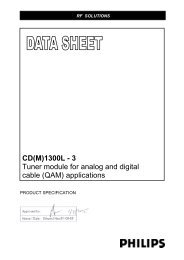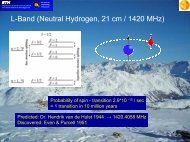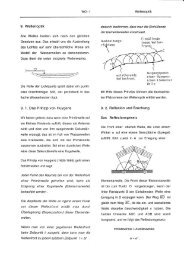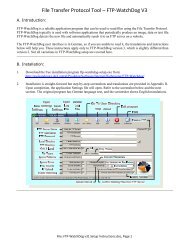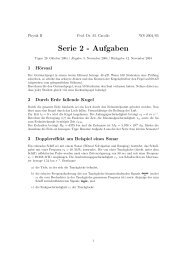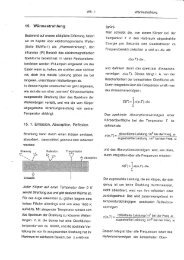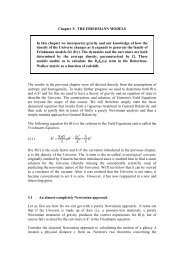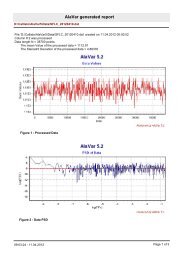here - Institute for Astronomy Umleitung
here - Institute for Astronomy Umleitung
here - Institute for Astronomy Umleitung
Create successful ePaper yourself
Turn your PDF publications into a flip-book with our unique Google optimized e-Paper software.
Title: Science Case<br />
Reference: MUSE-MEM-SCI-052<br />
Issue: 1.3<br />
Date: 04/02/2004<br />
Page: 36/100<br />
an emission line surface brightness through a Schmidt star-<strong>for</strong>mation law, normalised to a<br />
total flux of 10 -17 erg s -1 cm -2 . Consistent with Fig 1, the velocity field can be mapped with<br />
MUSE to approximately two disk scale lengths. Clearly, in addition to the rotation curves <strong>for</strong>,<br />
e.g., Tully-Fisher studies as a function of internal galactic properties, any internal kinematic<br />
sub-structure on these scales will also be detected by MUSE, allowing <strong>for</strong> example the<br />
investigation of environment-induced perturbations to the velocity fields, and their possible<br />
effect on global galactic properties such as total galactic star <strong>for</strong>mation rates and metal<br />
enrichment properties.<br />
For all galaxies with 0.25 10 -17 erg s -1<br />
cm -2 and R,I AB < 22.5. Note that this simple calculation does not take<br />
into account the beneficial effects of spatial inhomogeneities such as<br />
spiral structure in tracing the emission further out, nor does it take into<br />
account averaging over adjacent spaxels further out in the galaxy<br />
profile.




